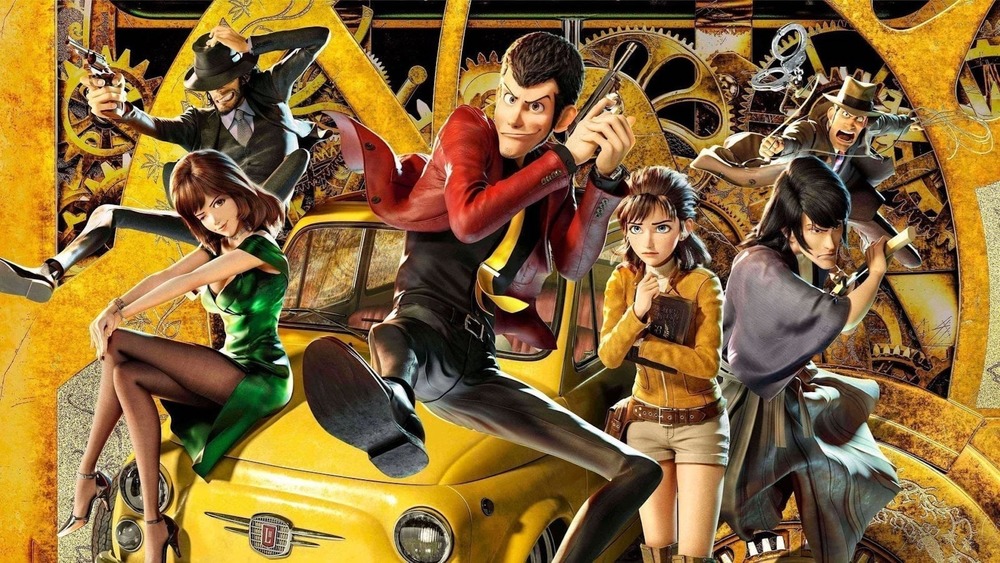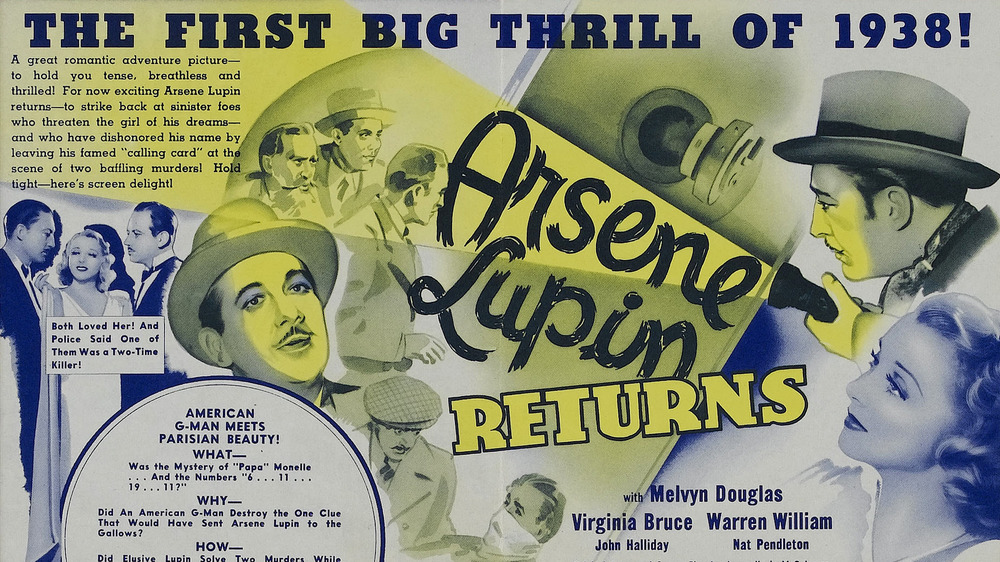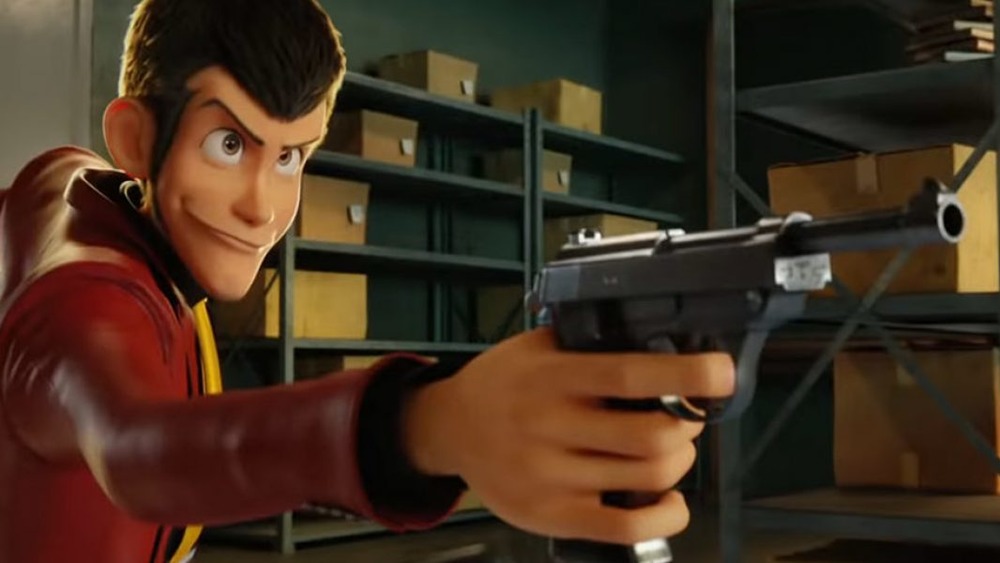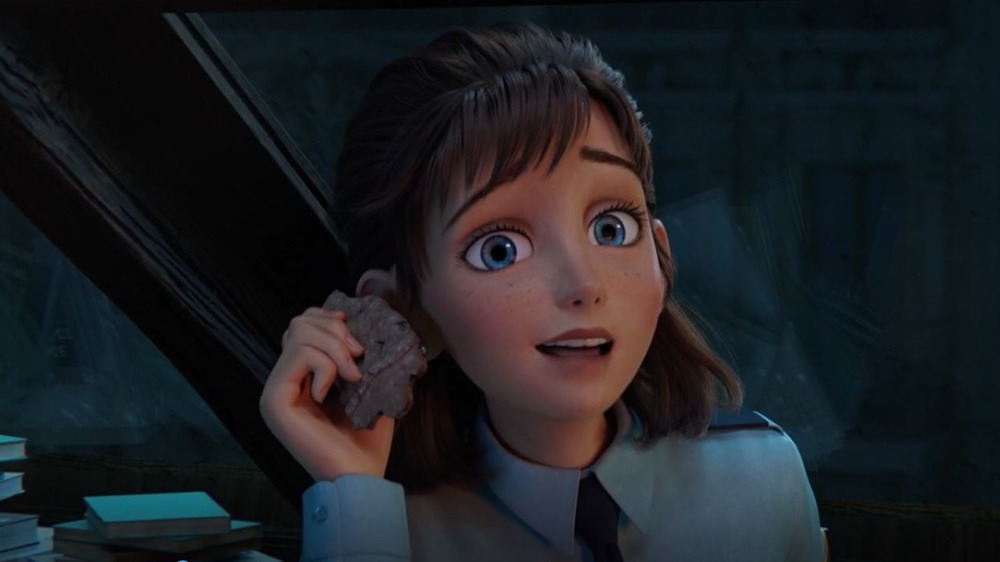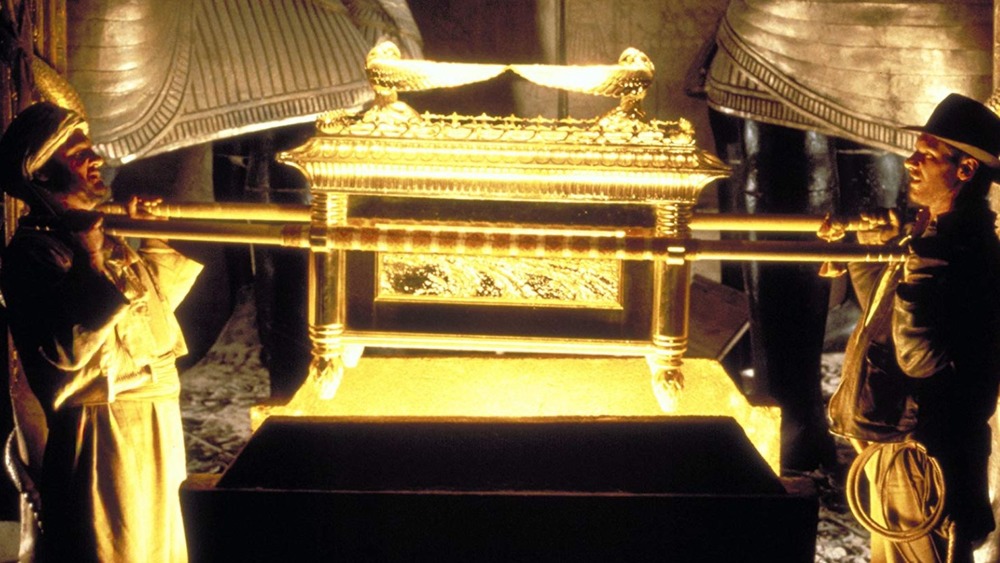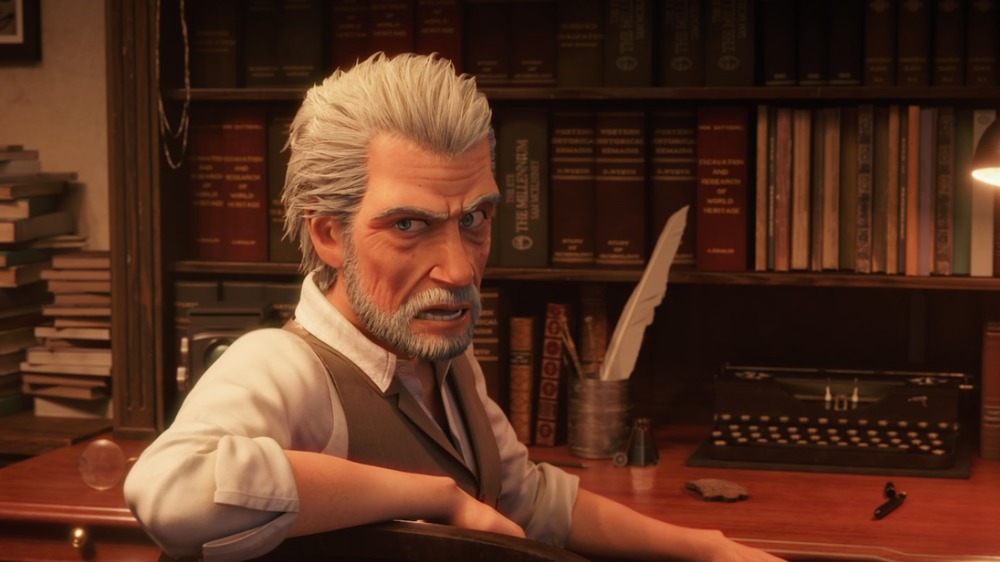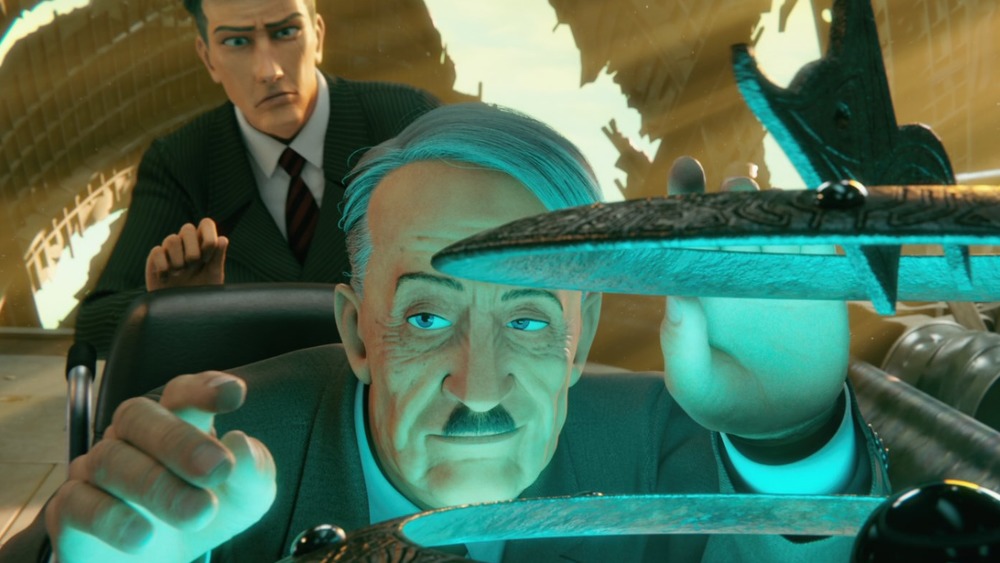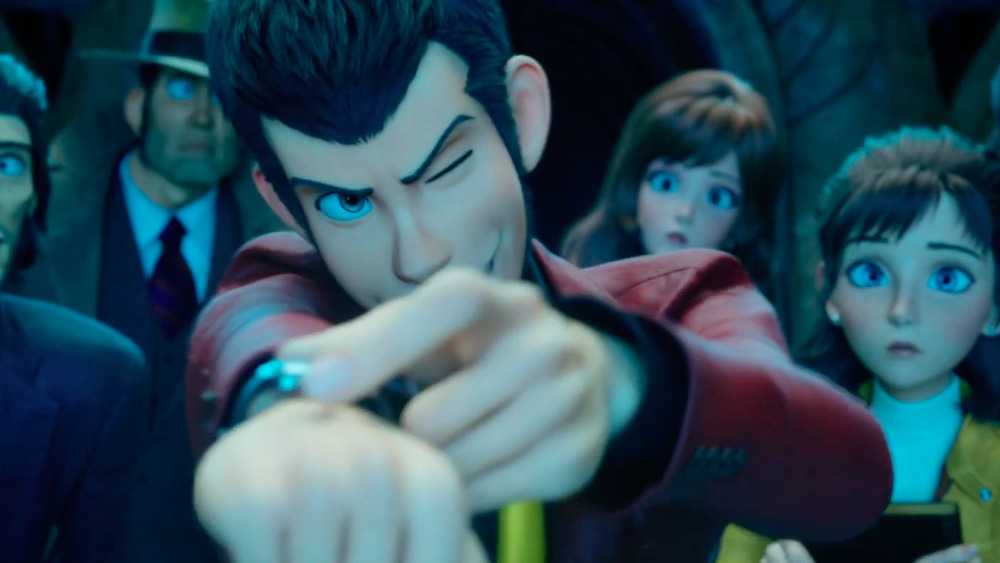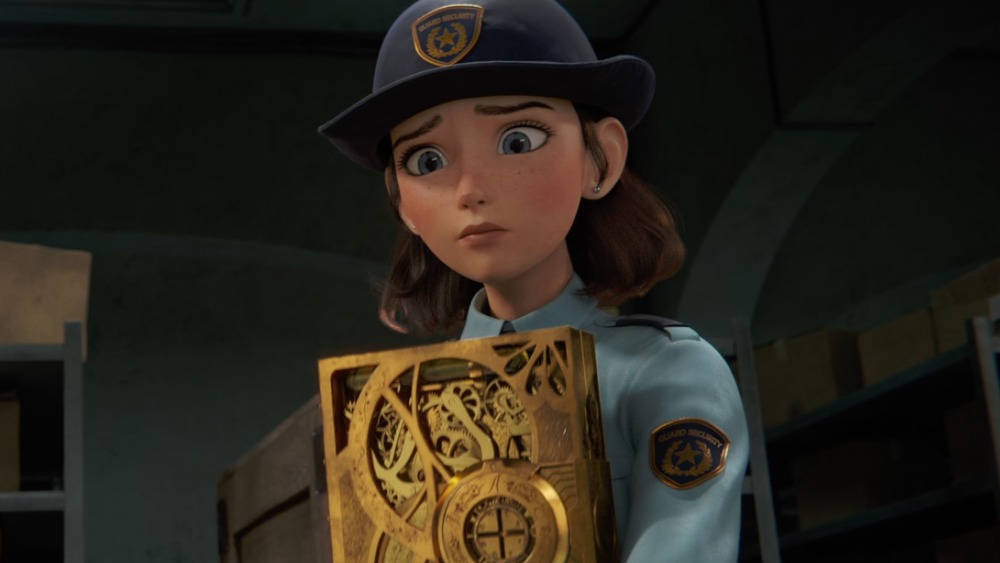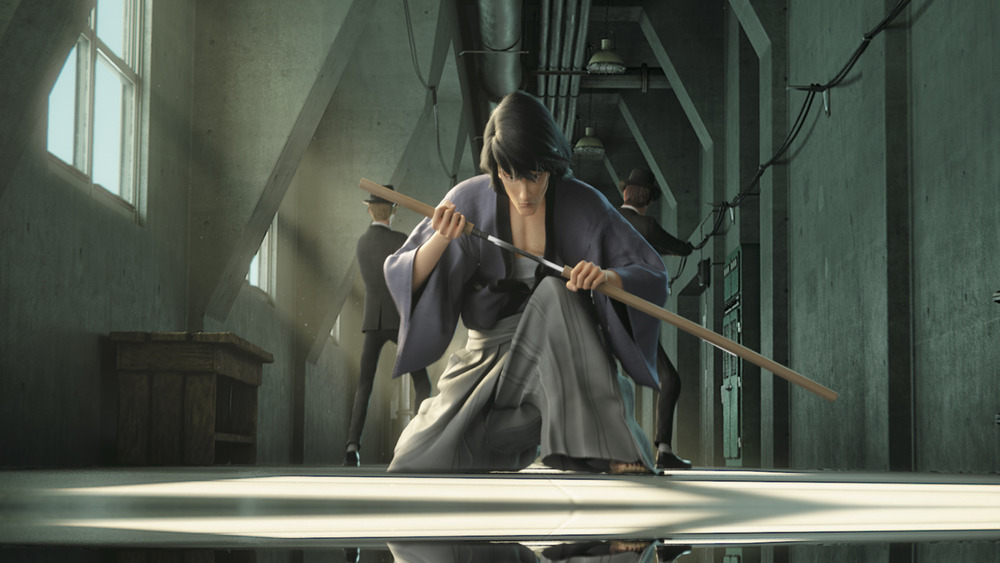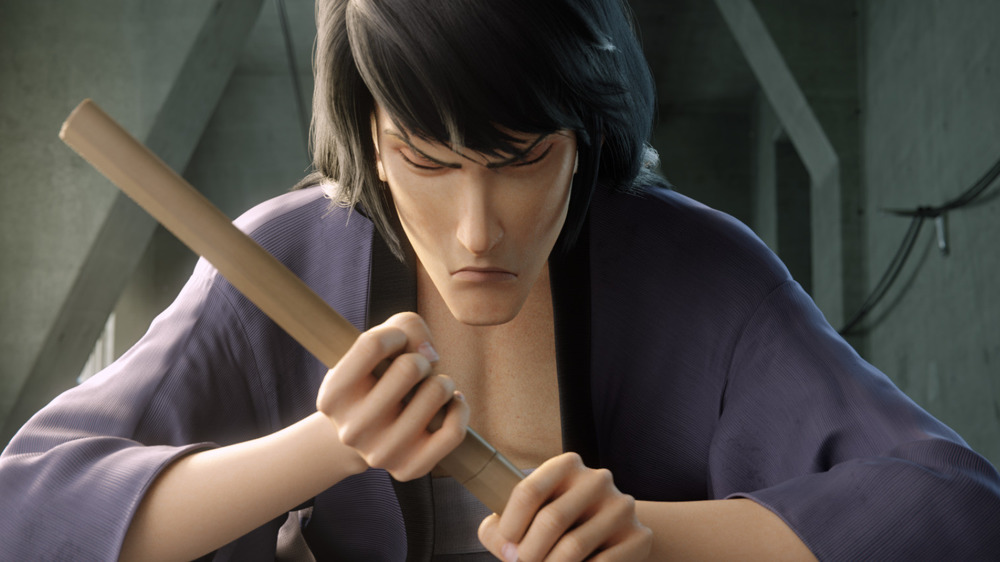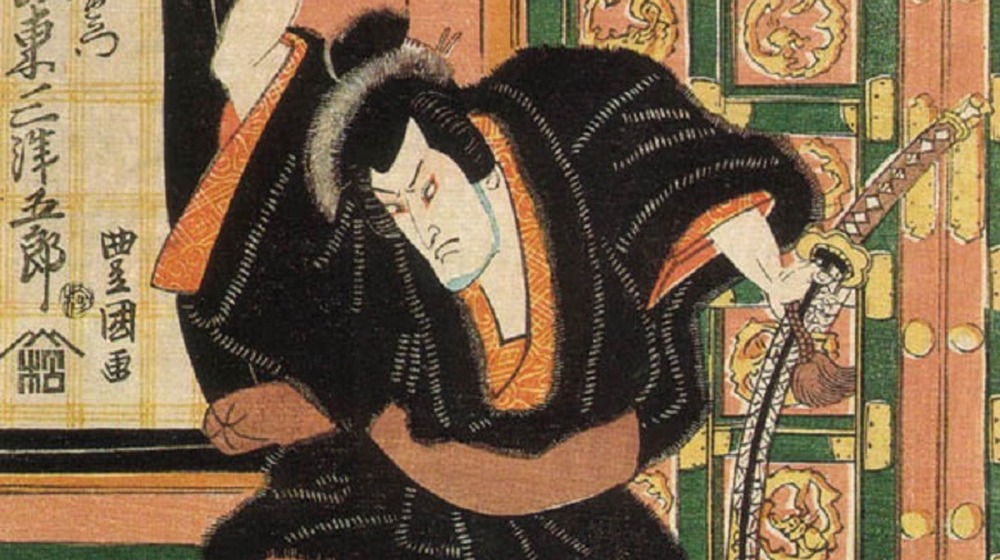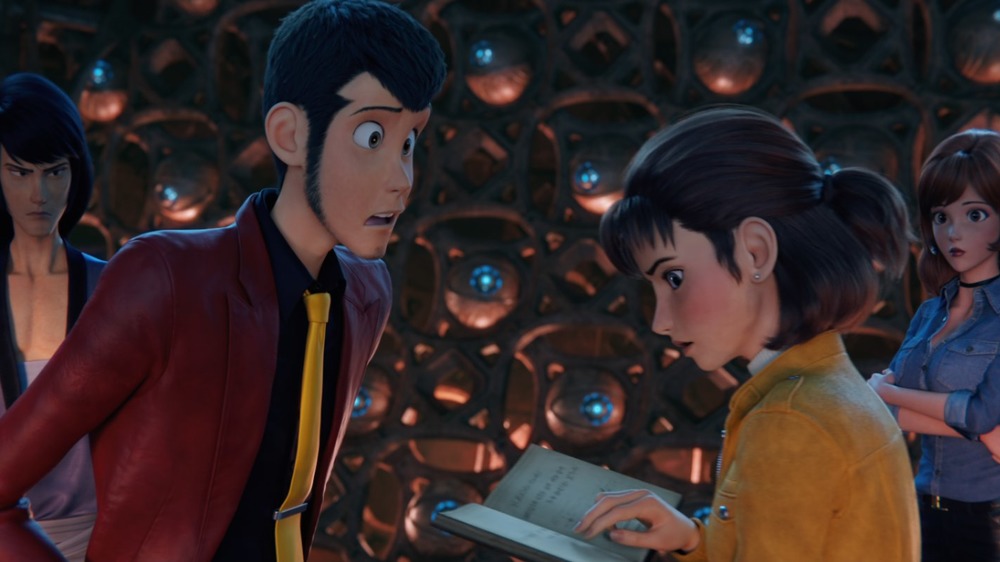Small Details You Missed In Lupin III: The First
Lupin III: The First is an action-packed comedy heist adventure the whole family can enjoy. Based on the timeless Japanese manga written and illustrated by genius mastermind Kazuhiko Katō, better known by his pen name Monkey Punch, this Japanese 3DCG animation seamlessly blends multiple genres into one thrilling technicolor dream ride. Anime's creativity and the cool swagger of '60s spy flicks meets the cutting edge allure of samurai pop mixed with the adventure archeology of Indiana Jones. It's the blend of genres you never knew you wanted, but will instantly fall in love with once you've seen it.
The plot follows the shenanigans of cavalier thief Arsène Lupin III and his motley crew around the world in search of the Bresson Diary — a valuable treasure that Lupin's infamous grandfather Arsène Lupin failed to catch. In addition to non-stop fun, the movie is rooted in real-life history and archeology. It's loaded with finer details that are easy to miss the first time around, including references to vintage literature, botany and taxonomy, treasure-hunting Nazis, swords crafted from fallen stars, and miniature black holes. There's something for everyone, so strap in and check out all the things you missed while watching Lupin III: The First.
The original gentleman burglar
Although Monkey Punch hails from Hamanaka in Hokkaido, Japan, Lupin III has international roots spanning across the continent into Europe. His in-story grandfather, Arsène Lupin, was a fictional gentleman thief and master of disguise created in 1905 by French author Maurice Leblanc. He proved to be quite a popular character, holding his own against Sherlock Holmes — although the name was changed to "Herlock Sholmes" after legal objections from creator and author Arthur Conan Doyle.
Dozens of novels and novellas were penned by other authors featuring Lupin, and the rapscallion burglar has also appeared in a number of film, television, stage play, and comic book adaptations — including Monkey Punch's manga and spinoff Japanese TV shows. The Japanese author and illustrator discovered Leblanc's writing in his youth, and was so influenced by it that Lupin imprinted himself into Punch's creative psyche, spawning his own contemporary spin-off. Considering the myriad of topics touched on in the prolific series, Monkey Punch must have been a well-read person with a wide-ranging array of interests.
A thief by any other name
During a moment of connection between Lupin III and the amateur archeologist Laetitia, he notices engravings of lupine flowers decorating the Bresson diary, and tells her these flowers have played an important role in his family's history. This subtle detail connects to the real history of these striking flowers being used in medieval family coats of arms, crests, and other heraldic devices — like the ones used to designate the various houses in Game of Thrones.
Numerous symbols from the natural world were used in heraldry, including flowers, plants, animals, the elements, and weather occurrences. Lupine flowers were commonly used to represent "imagination," which perfectly symbolizes the gentleman thief's unconventional problem-solving skills.
In an interesting twist, the root word "lupin" stems from the Latin "lupinus," meaning "pertaining to the wolf." This double meaning succinctly defines Lupin III's James Bond-like lecherous demeanor and wolfish grin — and is also why this moniker is fitting for the beloved werewolf Remus Lupin in Harry Potter.
Listening to the past
While Lupin III may be a burglar on a mission for long-lost treasure, his partner in crime Laetitia has deeper motivations for seeking the Bresson diary. In another touching moment between the two rebel archeologists, she discloses her innate passion for history and archeology. "The study of archeology is the only way to find the truth about the past," Laetitia tells Lupin while they're becoming acquainted in her book and manuscript-laden apartment.
Her heartfelt statement rings true with real-world science and research, for it is by peeling back the layers of what came before that humanity can learn to build a peaceful and prosperous present and future. If history isn't learned from, it's certainly doomed to be repeated — or worse, manipulated and twisted to serve some distorted higher purpose. When society falls out of touch with reality, that has the potential to set a precedent for all kinds of bad things to happen.
On a mission to control history
Like the Nazis seeking the Ark of the Covenant in Indiana Jones: Raiders of the Lost Ark, the Nazi baddies in Lupin III: The First seek the treasures of the Bresson diary. They may not have sought the fictional diary in real life, but members of the Nazi Party did go seeking out the Ark, along with many other religious and occult relics.
Hitler understood the power of controlling history: When the National Socialist German Workers' Party, better known as the Nazi Party, came to power in Germany in 1920, he undertook a propaganda program of dizzying proportions. A primary factor fueling the zealous confidence in Nazi superiority was the idea that German people were part of a "super-race" of light-skinned, golden-haired people called "Aryans."
Hitler's definition of the Aryan race was far from accurate, however, as the only people known by that name are the people now known as Persian-Iranians. Determined to prove his mythical, sunburn-prone Aryan race not only existed, but had roots stemming all the way back to the beginnings of human history and evolution, Hitler dispersed the most elite and educated members of the Nazi party across the globe seeking evidence they could use to twist for their own purposes. The Nazis we see in Lupin III: The First are literal cartoons, but their real-life treasure-hunting had its roots in one of modern history's darkest chapters.
Nazi treasure hunters
In real life, this elite group of Nazi researchers were known as the Ahnenerbe, an extension of the SS responsible for Hitler's grand propaganda plan. The word has roots in old German meaning "ancestral heritage," a nod to their fanatical search for proof of their supposedly god-like ancestors' existence. These were the same Nazi baddies Indiana Jones faced off against in Raiders of the Lost Ark, and a member of the Ahnenerbe may have even been a major inspiration for Indy.
They circled the world measuring people's skulls in the name of eugenics, searched for ancient treasure, art, and relics from the past, and examined various cultures for hints of Aryan existence seeded in ancient scripts and artifacts. In the process, the Nazi Party accumulated a vast amount of wealth and resources, much of it stolen from museums and personal collections.
In Lupin III: The First, Laetitia's adopted grandfather claims he was a member of this Nazi think tank, even proudly sporting an Ahnenerbe badge on his lapel — with the same symbol the group used on badges, rings, and other insignia used in World War II. The Indiana Jones themes also ring through the movie with ancient, hidden temples hiding vast treasures and traps lurking around every twist and turn.
Hitler... gone tropical?
The Nazi Party was unsuccessful in its mission to control the world, and Hitler took his own life when he could no longer ignore the writing on the wall. Despite this, rumors have circulated surrounding Hitler's death, which started almost immediately following his demise and continued for decades. People are fascinated with larger-than-life characters and tragic ends — which is like kindling for spreading rumored sightings.
The flames were fanned even further by declassified CIA memos from an undercover agent stating that Adolf Hitler may have been seen alive nearly a decade after his death, allegedly spotted in Colombia in 1954. Many Nazis fled to South America after the end of WWII, and while attempting to keep track of their whereabouts following the war, an undercover operative sent a photograph to the CIA depicting two gentlemen strongly resembling Hitler and a high-ranking Nazi official in Columbia.
The investigation was eventually dropped, citing lack of sufficient evidence for pursuing it — and experts do agree it's highly unlikely Hitler survived, citing strong evidence as proof, like his supposed escape U-boat discovered at the bottom of the sea ten miles north of Denmark. All of which is to say that when Lupin III: The First incorporates the seemingly fanciful idea of Hitler surviving and escaping to the Americas, it's a plot point that was inspired by real events.
The spy who tricked me
One of the more romanticized aspects of warfare are clandestine operations — it's always entertaining to see what sort of gadgets you'll see in James Bond and Mission: Impossible movies. There's something alluring about spies operating undercover, donning brilliant disguises and nifty, state-of-the art gadgets. As a master of disguise and skilled spy himself, Lupin III keeps a few tricks up his sleeves, including realistic masks and a wristwatch that launches a grappling line.
Although the latter may not be real, spies have had an extensive amount of pretty awesome gear to aid them on their quests for secret information. According to former Chief of Disguise for the CIA Jonna Mendez, one such apparatus was a surveillance device called the SRR-100, a false inner ear wired to a receiver tuned into KGB surveillance radio frequencies. Another cool spy gizmo was used for "quick-change" disguises, a valuable tool when the spy was press for time to change appearances.
One of the tools which aided the most with quick-change missions was a semi-automated mask, a.k.a. SAM. These revolutionary masks were so real they were difficult to recognize even up close, yet they were dubbed "five-second masks" because they took mere seconds to apply or remove. Even more amazing, SAMs could be folded up small enough to fit into somewhere inconspicuous, like your armpit. Lupin III's gizmos are a little cartoonish, in other words — but they might also be closer to reality than you think.
Unearthing the archeology and history of Lupin III
The Bresson diary might be fictional, but the majority of the other historical and archeological references in Lupin III: The First are rooted in reality — and there are a lot of them. This movie has surprising depth, and underneath the wisecracks lies a love letter to archeology and world history — perhaps best summed up in an exchange between Laetitia and Lupin III: "The romance is essential, any archaeologist would say so."
Many references can be found in the diary itself. While examining its pages, which are covered with sketches reminiscent of Leonardo da Vinci, Lupin and Laetitia read passages mentioning ancient Hebrew, an ancient unit of measure known as cubits, and the Akkadian Empire. Their travels later take them from France to the ancient Mesoamerican city of Teotihuacan, a real city in Mexico in which lies a fictional hidden temple full of traps and treasure.
The trials Lupin and crew must pass all make mention of even more historically accurate events, including the Epic of Gilgamesh and Code of Hammurabi — better known for its call for an "eye for an eye" form of retribution. Luckily, the group of misfits has everything they need to overcome the odds and get to the heart of the temple.
I know kung fu
On top of granting a meticulous level of historical accuracy to Lupin III: The First, the animators also made sure to draft realistic martial arts into the action sequences. There are a number of memorable fights throughout the film, and a well-versed eye can easily note the accurate joint locks and hip throws peppering the action. Femme fatale Fujiko Mine holds her own with high-flying kicks and neck-breaking triangle chokes, while Lupin III takes the realism even further by remarking "Ouch!" when blocking a fiercely thrown kick — that's right, those who train will tell you that blocking a hard kick with your hands can most definitely sting a little bit.
Katana-wielding Goemon Ishikawa XIII represents 13 generations of renegade samurai, and has been practicing a number of Japanese martial arts since childhood, including Kenjutsu, Karate, Jujutsu and Iaidō. To give an idea of how much of an obsessed craftsman Geomon is with his swordsmanship, the latter martial art focuses solely on the refinement of drawing one's sword — and that perfection and ingrained muscle memory shows onscreen. Ironically, the stiffly traditional martial artist usually finds himself forced to use his beloved sword on something he deems "unworthy" of its blade — which has become a bit of a long-running joke in the franchise.
Swords from heaven
In Lupin III: The First, Goemon also faces a situation in which he must use his katana to get out of a less-than desirable situation. While maneuvering the trials presented in the temple at Teotihuacan, Geomon, Lupin, Laetitia, and the rest of the crew need to pass over a wide crevasse. After solving a riddle-like hint, Laetitia deduces they need a "fallen star" to bridge the gap, but as Lupin jokingly points out, no one present has a meteorite in their pockets — or so it seems.
It so happens that Goemon's katana is forged from an iron meteorite, which somehow takes these already badass Japanese swords up to 11. Goemon's sword has many mystical properties, but as it turns out, people have been forging weapons from meteorites for as long as they've been finding them — including katanas.
Examples include the stunning Tentetsutou ("Sword of Heaven"), a katana crafted by Japanese master swordsmith Yoshindo Yoshiwara, and Ryuseito (literally "comet swords") — five swords crafted by Okayoshi Kunimun in 1895 from a meteorite found in Japan more than 130 years ago. Interestingly, Goemon's sword goes by the name of Ryusei in the manga, but is better known by the moniker granted to its animated incarnation, Zantetsuken (meaning "iron-cutting sword").
A name too hot to handle
In addition to his awesome meteorite sword being rooted in non-fiction, Goemon's name also has origins rooted in actual history — although the real-life tale has a much darker end. Born in Japan in 1558, Ishikawa Goemon was a legendary outlaw folk hero with remarkable ninjitsu and swordsmanship skills — similar to Robin Hood, but much sneakier and pointier.
Unfortunately, Goemon's days as an outlaw were limited — in 1594, he and his son were foiled in an attempt to assassinate a warlord, and the two were boiled alive after being captured. Geomon's untimely death only increased his legend, amplifying his fighting prowess to biblical proportions and making him the popular subject of classic kabuki theater dramas into contemporary Japanese culture. There's even a certain style of large metal bathtub named after him, called a goemonburo — which literally translates to "Goemon bath," which is ironically dark when you consider the context.
Real-life mini-black holes
In Lupin III: The First, the Bresson diary guards a secret treasure — but not one composed of precious metals or jewels. At the heart of Teotihuacan lies a source of endless energy called the Eclipse, a mini-black hole generator that can be harnessed for peaceful or destructive means, depending on whose hands it winds up in.
The Eclipse may be a work of fiction, but the concept of tiny black holes occurring here on Earth is based in real science — which is simultaneously adorable and terrifying. Particle accelerators have been in use since 1930 as a way to help scientists understand how the building blocks of matter interact with each other, and in turn, how the universe was made. They're basically sophisticated particle guns, shooting atoms and even smaller units of matter at each other at close to the speed of light.
When the larger colliders that exist today were being built, like the five-mile diameter Large Hadron Collider in Switzerland, some people feared they might be capable of replicating destructive black holes here on Earth — like a horrific, real-life version of Interstellar. Would civilization as we knew it come to an end? Thankfully, although these colliders do create black holes, they are microscopic reactions and pose no threat to existence.
